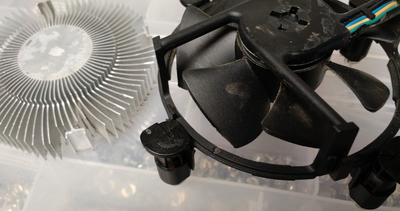First post, by clueless1
- Rank
- l33t
I've never seen this happen before to a stock Intel C2D HSF - the fan seized. These fans are some of the highest quality made so I was shocked when I encountered this. I've already replaced it with a spare, now I've got the seized fan on my desk and examining it for educational purposes. I've got the plastic fan assembly off of the heat sink, got the Intel stick off the top, but see no entry point to lubricate this guy. I'm guessing no (also, the internet has lots of info on lubing generic fans, but not Intel ones), but maybe someone here has some experience?
The more I learn, the more I realize how much I don't know.
OPL3 FM vs. Roland MT-32 vs. General MIDI DOS Game Comparison
Let's benchmark our systems with cache disabled
DOS PCI Graphics Card Benchmarks
